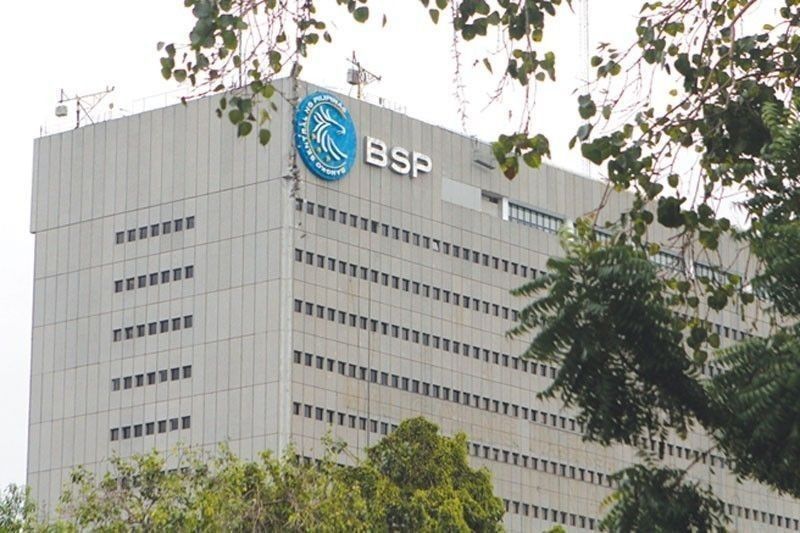BSP lifts rates, inflation targets

MANILA, Philippines — As expected, the Bangko Sentral ng Pilipinas (BSP) remained hawkish yesterday, delivering another 50-basis-point interest rate hike as there is a need for follow-through action to anchor inflation expectations and prevent price pressures from becoming further entrenched.
The latest tightening brought the cumulative rate hikes to 225 basis points and wiped out the 200-basis-point cumulative rate cuts in 2020 as part of the central bank’s COVID response measures that brought the benchmark interest rate to a record low of two percent.
The BSP raised its key policy rates hours after the United States Federal Reserve delivered another jumbo 75-basis-point interest rate hike.
BSP Deputy Governor Francisco Dakila Jr. said the latest rate hike brought the benchmark rate to 4.25 percent, the highest since the 4.50 percent in June 2019.
Accordingly, the interest rates on the overnight deposit and lending facilities were raised to 3.75 percent and 4.75 percent, respectively.
“In deciding to raise the policy rate anew, the Monetary Board noted that price pressures continue to broaden. The rise in core inflation indicates emerging demand-side pressures on inflation,” Dakila said.
A higher benchmark interest rate raises borrowing costs for consumers and businesses, thereby slashing inflation by slowing the economy and eating away at demand.
Inflation averaged 4.9 percent in the first eight months, exceeding the BSP’s two to four percent target range, despite slightly easing to 6.3 percent in August from 6.4 percent in July.
“Moreover, second-round effects continue to manifest, with inflation expectations remaining elevated in September following the approved minimum wage and transport fare increases. Nonetheless, inflation expectations continue to be broadly anchored over the medium term,” Dakila said.
According to Dakila, the Monetary Board decided to raise its inflation forecasts to 5.6 percent from the original target of 5.4 percent for this year and to 4.1 percent instead of four percent for next year due to the potential impact of higher global non-oil prices, pending petitions for further transport fare increases, the impact of weather disturbances on prices of food items and the sharp increase in sugar prices.
Inflation, Dakila explained, would continue to pick up in September amid higher food prices, adjustment in electricity rates, and base effects.
He said inflation may start to decelerate in the fourth quarter and ease to within the BSP’s two to four percent target range by the second half of next year.
For 2024, the BSP lowered its inflation projection to three percent from the original forecast of 3.2 percent.
Dakila said the latest fare hikes approved by the Land Transportation Franchising and Regulatory Board (LTFRB) contributed 0.1 percentage point and 0.2 percentage point, respectively to its latest inflation forecasts for 2022 and 2023. Transportation accounts for about 4.3 percent of the consumer price index (CPI) basket.
Meanwhile, the BSP official said the impact of a weaker-than-expected global economic recovery continues to be the main downside risk to the outlook.
“Given elevated uncertainty and the predominance of upside risks to the inflation environment, the Monetary Board recognized the need for follow-through action to anchor inflation expectations and prevent price pressures from becoming further entrenched,” Dakila said.
The Philippines exited the pandemic-induced recession as the country’s gross domestic product (GDP) grew by 5.7 percent last year, reversing the 9.6 percent contraction in 2020. .
The expansion was sustained as the GDP growth averaged 7.8 percent in the first half despite slowing down to 7.4 percent in the second quarter from 8.2 percent in the first quarter. This is slightly higher than the 6.5 to 7.5 percent target set by the Cabinet-level Development Budget Coordination Committee (DBCC).
Bank of the Philippine Islands lead economist Jun Neri said real policy rate remained negative for the past 23 months despite the rate hike delivered by the BSP yesterday.
“Assuming the Fed officials will stick to their latest dot plot, the Fed Funds rate may increase further to 4.4 percent in 2022 and 4.6 percent in 2023. If the BSP continues to hike by 50 basis points only in the last two meetings of the year, the differential with the US rate will go back to where it was in July when the BSP did an off-cycle hike,” Neri said.
In this scenario, Neri pointed out that the peso may continue to depreciate and may even breach the 59 to $1 level.
“This may lead to another inter-meeting hike given the need to temper the depreciation of the peso,” Neri said.
- Latest
- Trending


























